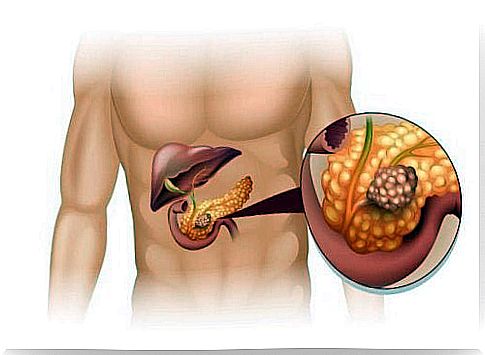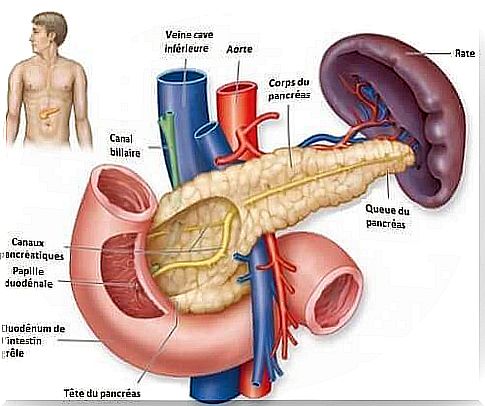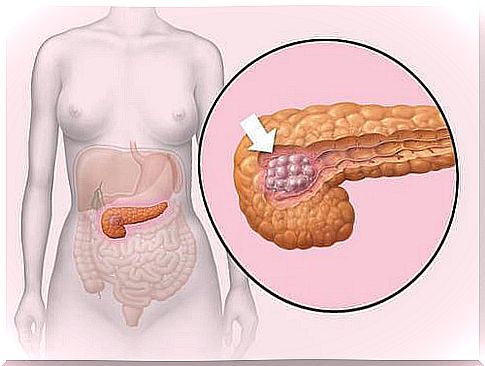Treatment Of Neuroendocrine Tumors Of The Pancreas
Diagnosis of neuroendocrine tumors of the pancreas requires clinical examination, endocrine tests, diagnostic imaging and histopathological analysis of the tumor.

Pancreatic neuroendocrine tumors are a collection of types of endocrine tumors that arise from islet cells in the pancreas. They are usually non-aggressive, although they can be potentially malignant.
Types of neuronendocrine tumors of the pancreas
Tumors produced in islets can be of two types: functional and non-functional.
Functional tumors

When tumors are functional, there is hormonal hypersecretion. These types of tumors include:
- Gastrinoma : it is a tumor secreting gastrin. It is responsible for the hypergastrinemia of Zollinger-Ellison syndrome.
- Insulinoma : This is one of the most common neuroendocrine tumors of the pancreas. This is a pathology in which there is an excess of insulin. However, it is usually mild.
- Glucagonoma: this is a malignant tumor. There is an increase in glucagon secreted by alpha cells in the islets of the pancreas.
- Somatostatinoma : it is an extremely rare and generally malignant tumor, which is called hypersecretory of somatostatin.
- VIPoma : this type of tumor has a low incidence and is a hypersecretor of an intestinal polypeptide.
- ACTHoma : ACTH is the adrenocorticotropic hormone. When this hormone is hypersecreted in the pancreatic islets, rapidly growing tumors develop.
Non-functional tumors
Non-functional tumors have little or no hormonal secretion. They represent between 35 and 50% of neuroendocrine tumors of the pancreas. They are usually diagnosed between the ages of 50 and 60.
About half of these tumors are located in the head and tail of the pancreas. Among the non-functional tumors, PPome is the most common. These tumors grow slowly. They are detected when they have grown to a large size and metastases are present. In general, patients present with symptoms such as:
- Weightloss
- Abdominal pain
- Palpable mass
- Jaundice
Diagnosis of neuroendocrine tumors
Diagnosis of neuroendocrine tumors of the pancreas requires clinical examination, endocrine tests, diagnostic imaging, as well as histopathological analysis of the tumor.
- Other techniques such as endoscopic ultrasound and somatostatin receptor scintigraphy also allow us to see liver metastases, lymph node metastases and bone metastases. Immunohistochemistry is a test necessary to determine the grade of the tumor.
Treatment of neuroendocrine tumors
Treatment of pancreatic neuroendocrine tumors largely depends on whether or not they can be completely removed. However, there are other factors, such as general health, to consider when choosing a treatment.
It can sometimes be difficult to determine if the tumor can be completely removed. For this reason, doing a laparoscopy before surgery will also help confirm whether the tumor can be removed.
Neuroendocrine tumors of the pancreas are more likely to be resectable or completely removed than exocrine tumors. Exocrine tumors are the most common pancreatic cancers.
Treatment of resectable tumors

Most pancreatic neuroendocrine tumors that don’t spread to distant parts of the body are resectable. Even some pancreatic neuroendocrine tumors that spread can be resectable, if they haven’t spread too far.
The surgery will depend on the type of tumor, the size and the location in the pancreas. The surgery can be simple by removing the tumor alone, or it can be complex like Whipple’s surgery (pancreaduodenoctomy).
Lymph nodes are also often removed. However, after the procedure, it is important to monitor recovery. So watch out for any signs of cancer relapse or spread.
Treatment of unresectable neuroendocrine tumors
These tumors cannot be completely removed with surgery. They are usually slow growing tumors. In some cases, their development may be monitored and medications prescribed to slow their growth.
In patients with unresectable tumors, doctors prescribe chemotherapy as the first treatment. When tumors spread outside the pancreas, patients experience symptoms like diarrhea and hormonal problems.
The prognosis for neuroendocrine tumors is variable. The least favorable is that of higher grade tumors and the presence of metastases in the liver and lymph nodes. The 5-year survival rate for functional resectable tumors is over 97%, but it is 30% for non-functional tumors.









